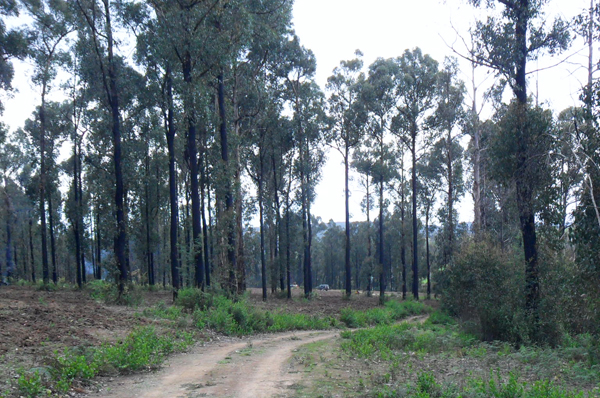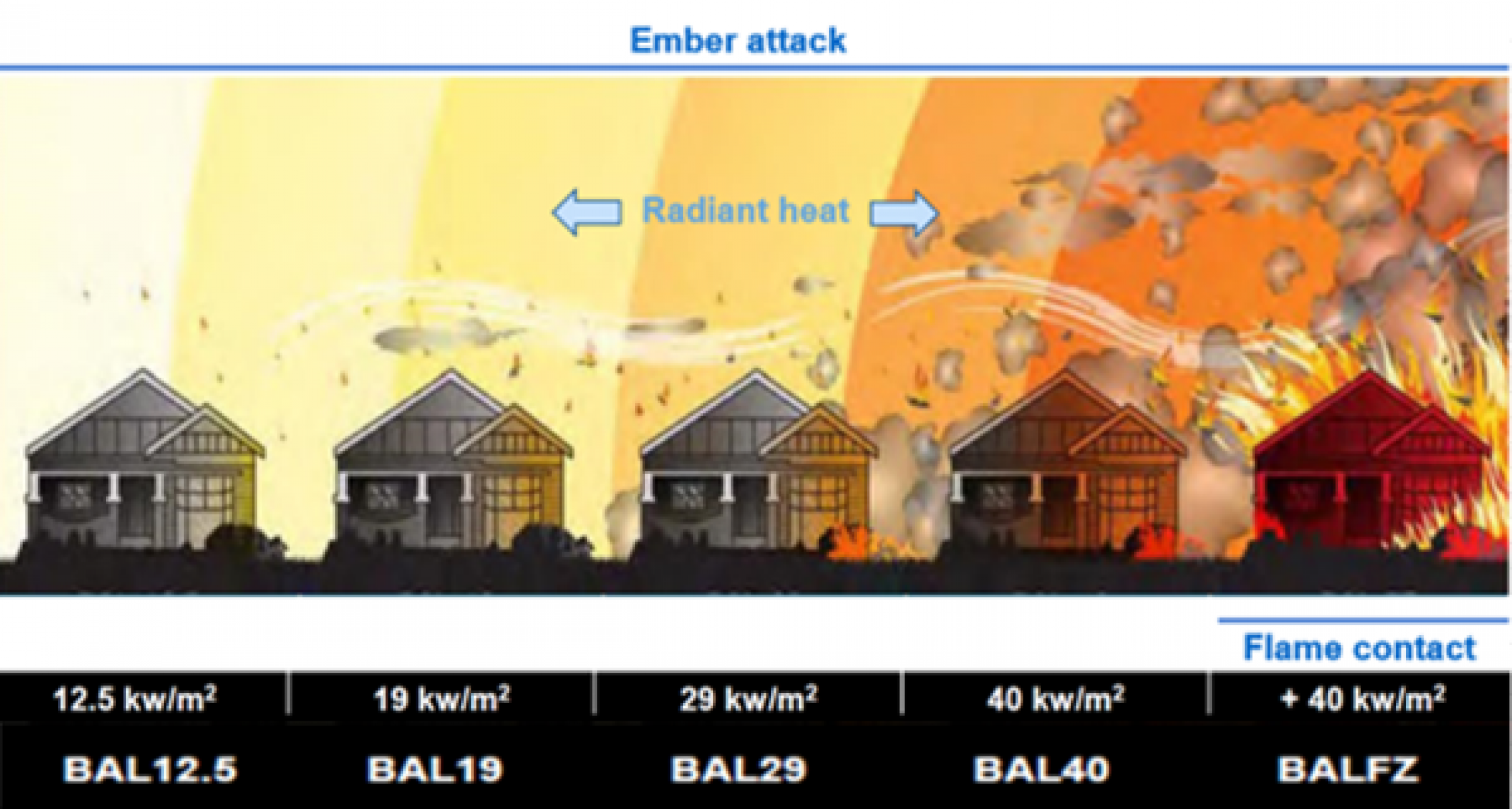Navigating the flames: bushfire risk management with MM

In much of Victoria, bushfires aren’t a hypothetical threat, but a reality which must be considered. For areas within a Bushfire Management Overlay (BMO) or in a bushfire prone area (BPA), the potential for these events to occur is high, so mitigating the risk as much as possible is an essential consideration for any land development.
It is essential for planners to understand the balancing of priorities – our integrated planning policy has a lot of factors to consider for any land development project. All policies and priorities must be balanced within any project unless there is risk to life from bushfire.
In a BPA or a BMO, bushfire risk trumps all, where responsible authorities and planners must ‘prioritise the protection of human life over all other policy considerations.’ Because of this, bushfire must be considered as essential at the forefront of any project, especially as dealing with bushfire risk can make a project completely unfeasible.
Understanding bushfire risk
Bushfire Attack Levels, or BALs, measure the potential exposure of buildings to fire, ranging from low to extreme. A higher BAL indicates a greater risk of fire due to things such as ember attack, radiant heat and direct flame contact and thus requires more stringent building requirements and considered planning to reduce risk to life.

BAL Diagram, sourced from Department of Transport and Planning
Bushfire management overlays
The BMO is a policy that imposes specific bushfire protection requirements for land use and development in areas prone to extreme bushfire behaviour. This overlay includes the requirements for:
- Defendable spaces: areas around buildings that are maintained to reduce fuel loads and create a barrier between the structure and a potential fire.
- Construction standards: restrictions on the use of flammable materials, as per the applicable BAL rating.
- Access: A series of design requirements apply to ensure adequate access for CFA vehicles Water Supply: A static water supply for firefighting purposes
These measures seek to prevent fire spread, keeping residents safe and lowering the risk of fire.
BMOs vs BPAs
Expansive areas of Victoria are contained within a BPA and these are locations that are likely to be subject to bushfires When obtaining a building permit, the owner or developer will need to address the applicable BAL requirements through preparation of a BAL Report.
The BMO applies to land that may be significantly affected by extreme bushfire behaviour such as crown fire, extreme ember attack and radiant heat. It is a planning scheme tool – a control coming under the Planning & Environment Act and must be suitably addressed to obtain a planning permit. A Bushfire Management Statement, including bushfire hazard site assessment and bushfire hazard landscape assessment are required to be prepared.
The impact of bushfire risk on land development
Bushfire risk can significantly influence the planning and execution of land development projects, particularly those in areas affected by a BMO. Bushfire risk must be considered over many of Millar Merrigan’s disciplines:
- Surveying: accurate topographic surveys and locating the edge of vegetated areas are crucial for identifying potential fire hazards.
- Engineering: civil engineers must ensure that roads and driveways are designed to meet CFA requirements, including gradients, passing bays and turn around areas as applicable. They must also consider the location of new fire hydrants and cater for static water supply when a dedicated CFA supply is required.
- Urban design & town planning: urban planners must consider bushfire mitigation strategies such as perimeter roads, setbacks and defendable spaces when developing land-use plans.
- Building design: this team must ensure that detailed dwelling specifications adheres to the Australian Standard for development in Bushfire Prone Areas. This includes consideration of factors such as materials, ventilation and construction techniques.
- Landscape architecture: contributing to bushfire mitigation through designing more fire-resistant gardens through considerate landscaping and vegetation management plans. Both in terms of existing landscaping and ‘defendable space management’, but also proposed landscaping particularly in large estates. Newly established landscaping may not cause a risk however over time areas such as revegetation along waterways will grow into vegetation that may create a hazard.
- Project management: project managers must be aware of bushfire regulations, working to coordinate with relevant authorities and councils to ensure the successful, and safe, delivery of a development.
Managing bushfire risk is not the responsibility of one person, or one department; we’re lucky to have all these areas under one roof, with teams familiar with working in BPA and BMO able to lend their knowledge to benefit each other and the overall project.
This ensures efficient outcomes for clients, as not only do they receive expert land development advice, but bushfire advice within the same person or team.
The role of a landowner or resident
There are things that must be considered in these areas, not only when developing, but when living in BPAs. These considerations include:
- Regular maintenance: keep your roof, gutters and downpipes free of leaves and debris to prevent embers from igniting your home.
- Fuel management:
reducing fuel loads is crucial for mitigating bushfire risk. This may involve clearing undergrowth, creating firebreaks, and using prescribed burns.
- Develop an emergency plan: outlining your escape routes, evacuation and a designated meeting place. Refer to CFA publications for assistance.
The role of bushfire experts
At Millar Merrigan, we’re luckily situated to have the knowledge of many experts across several disciplines under one roof, providing a holistic and wide understanding of bushfire risk and how to mitigate this as far as possible.
Navigating bushfire risk in land development requires a comprehensive approach that considers unique challenges and regulations. Through understanding bushfire risk’s impact on various disciplines, complying with planning and building regulations and seeking expert guidance, land developers can mitigate risks and create resilient communities.
Millar Merrigan is committed to providing the necessary expertise and support to help clients navigate this critical aspect of land development. We’re ready to help you with guidance on any project you may be considering within a BPA or BMO – get in contact with our team today to get started on the right foot.